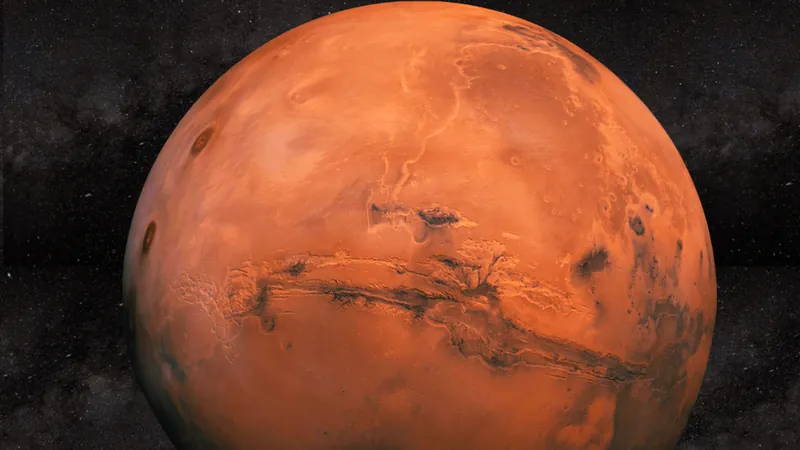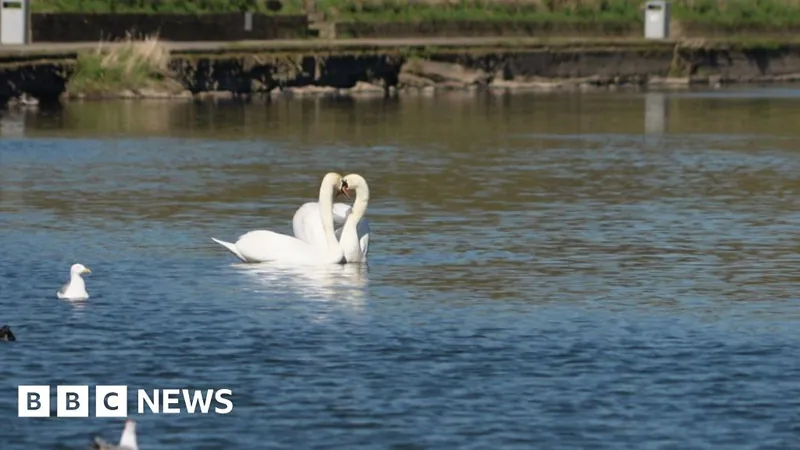
The Mystery of Mars' Missing Water: New Theories Shake Our Understanding!
2025-03-21
Author: Siti
The Mystery of Mars' Missing Water: New Theories Shake Our Understanding!
Scientists are increasingly convinced that ancient Mars was once teeming with water, evidenced by colossal channels carved by floods, remnants of river valleys, and minerals that thrive only in the presence of liquid water. But the question of how this once water-rich planet morphed into the desolate landscape we see today remains hotly contested!
In a significant new twist to this ongoing debate, the credibility of a theory suggesting that vast reserves of water lie hidden beneath Mars' crust is being challenged. Bruce Jakosky, a senior research scientist at the University of Colorado Boulder and a former principal investigator of NASA's groundbreaking Mars Atmosphere and Volatile EvolutioN (MAVEN) mission, recently published a letter in the Proceedings of the National Academy of Sciences (PNAS). He presents an alternative perspective to last year's conclusions regarding water storage below the surface.
“We expect there to be water or ice in Mars’ crust,” Jakosky iterated, acknowledging the complexities involved in detecting and quantifying it. “Actually detecting it and possibly determining its abundance is challenging, but it is crucial for understanding Mars' water history.”
InSight's Revelations: A Deep Dive into Mars’ Secrets
In 2024, a team led by Vaughan Wright from the Scripps Institution of Oceanography and the University of California San Diego released findings that proposed a mid-crust of fractured, water-saturated igneous rock best accounts for seismic data gathered by NASA’s retired InSight mission. InSight was launched in 2018 to probe Mars' internal features, examining seismic activity, temperature, and core dynamics.
Wright and his colleagues meticulously analyzed InSight's data to hypothesize about the types of rocks below the Martian surface and the levels of water saturation, proposing that the crust could contain between 0.62 to 1.24 miles (1 to 2 kilometers) of water spread evenly across Mars. To put this into perspective, Earth's crust has an equivalent layer of around 3.6 kilometers, primarily composed of our vast oceans.
However, Jakosky's reassessment sheds new light on Wright's findings. He cautions against jumping to conclusions, noting that the pore spaces within the crust could also harbor solid ice or, in some cases, be completely empty. His comprehensive evaluation implies that seismic data gathered from InSight doesn't definitively confirm the presence of liquid water, yet it also leaves open the possibility that liquid exists in fluctuating amounts.
After his thorough examination, Jakosky adjusted the range of water estimates, indicating it could fluctuate from zero to as much as 1.24 miles (0 to 2 kilometers) if evenly distributed across Mars' surface.
Both teams utilized "liquid water saturation" as a key metric in their analyses, which measures how filled the pore spaces within rock are with water. Wright's modeling suggested those spaces could be nearly fully saturated, which would cause the rocks to respond distinctly to seismic activity, reinforcing InSight's findings. Yet Jakosky’s insights introduce a broader spectrum of possibilities that could reshape our understanding of Martian geology.
The Future Awaits: What Lies Beneath?
With advancements in spacecraft technology, future missions could provide the precise measurements necessary to determine the abundance of water trapped within Mars' crust. Jakosky optimistically proposed that “it may be possible” to enhance our comprehension of water's distribution as we continue to explore the Red Planet.
As scientists grapple with these new theories, the debate surrounding Mars' water continues to ignite curiosity and enthusiasm within the scientific community and beyond. Could Mars be hiding more secrets beneath its crust than we ever imagined? Only time—and future exploration—will tell!



 Brasil (PT)
Brasil (PT)
 Canada (EN)
Canada (EN)
 Chile (ES)
Chile (ES)
 Česko (CS)
Česko (CS)
 대한민국 (KO)
대한민국 (KO)
 España (ES)
España (ES)
 France (FR)
France (FR)
 Hong Kong (EN)
Hong Kong (EN)
 Italia (IT)
Italia (IT)
 日本 (JA)
日本 (JA)
 Magyarország (HU)
Magyarország (HU)
 Norge (NO)
Norge (NO)
 Polska (PL)
Polska (PL)
 Schweiz (DE)
Schweiz (DE)
 Singapore (EN)
Singapore (EN)
 Sverige (SV)
Sverige (SV)
 Suomi (FI)
Suomi (FI)
 Türkiye (TR)
Türkiye (TR)
 الإمارات العربية المتحدة (AR)
الإمارات العربية المتحدة (AR)